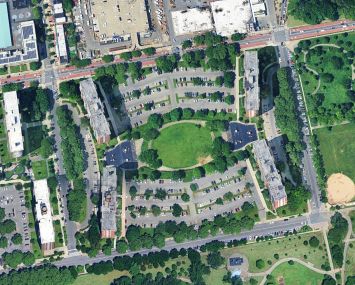 Even those who don’t adore Andrew Farkas give the guy his due: The New York whiz kid who conquered New York real estate before becoming Dubai World’s man in Manhattan is one sharp suit.
Even those who don’t adore Andrew Farkas give the guy his due: The New York whiz kid who conquered New York real estate before becoming Dubai World’s man in Manhattan is one sharp suit.
Consider this. In early 2009, well before Dubai World’s announcement that it would postpone servicing $26 billion in debt shook global markets, Mr. Farkas, unbeknownst to all but his closest friends and business associates, cashed out of substantial investments with the government-run corporation in both Manhattan and Dubai. A source put the cash-out value at $180 million. Mr. Farkas, 49, declined to confirm or deny that number. But it comes on top of the riches Mr. Farkas reaped working with Dubai, flipping the Beaux-Arts Helmsley Building at 230 Park Avenue, and investing in (and then in 2009 cashing out of) the W Union Square and 450 Lexington Avenue. He also invested and still retains a stake in the Mandarin Oriental.
And that’s only the half of it. If Mr. Farkas was Dubai World’s man in Manhattan, Dubai World chairman Ahmed Bin Sulayem was his man in the Middle East.
Not only did Mr. Farkas’ Island Global Yachting win the development and operating rights for all of Dubai World subsidiary Nakheel’s marinas in the emirate, but he also founded ENSec, the Emirates National Securitization Corporation. Proving his business smarts yet again, earlier this year Mr. Farkas sold his Dubai marinas to a Qatari firm, and unloaded ENSec onto the Dubai government.
REAL ESTATE PEOPLE are notoriously catty. It’s part of their charm. So it’s telling that they don’t have many derogatory things to say about Mr. Farkas, resorting instead to petty insults about his height (he’s short); his wives (said to be towering blondes); and his silver-spoon upbringing (son of Alexander’s Department Store chairman Robin Farkas; Trinity; Harvard).
In 1981, when Mr. Farkas was president of Harvard’s exclusive (some would say exclusionary) Hasty Pudding Club, he won a mention in The New York Times in a story detailing the club’s efforts to rescue itself from financial ruin. (A wealthy alum ultimately saved it.)
Following graduation, Mr. Farkas embarked on a career of structuring and selling tax shelters. In 1990, at the tender age of 30, he founded a residential property investment and management firm called Insignia Financial Group. In 1993, he brought the firm public. And, in 1996, he bought the renowned commercial real estate brokerage Edward S. Gordon and Company for $74 million, two years later spinning off his residential portfolio to AIMCO.


